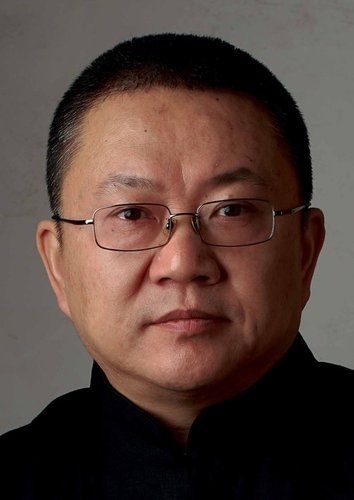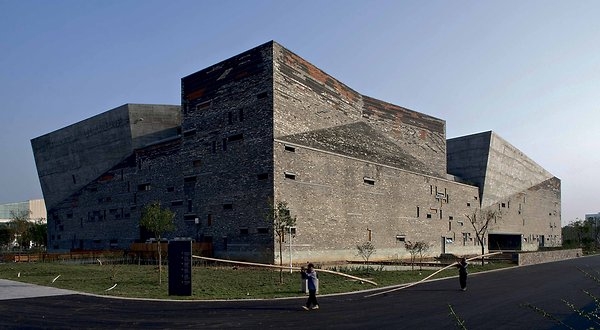A Chinese architect who has forged a different path from the bland, suburban-style development in his nation’s booming cities on Tuesday will be named the first Chinese winner of his field’s highest honor, the Pritzker Architecture Prize.

Wang Shu, 48 (left), deftly melds tradition and modernity, often by reusing bricks and tiles from demolished buildings in such bold new designs as a history museum in the ancient Chinese coastal city of Ningbo.
Wang calls his office the “Amateur Architecture Studio,” yet that name is far too modest, the jury that selected him said in its citation.
His work “is that of a virtuoso in full command of the instruments of architecture—form, scale, material, space and light,” said the jury, which mainly consists of architectural experts. This year, it included for the first time U.S. Supreme Court Justice Stephen Breyer, who has a keen interest in the field.
Given by the billionaire Pritzker family of Chicago, the award recognizes a living architect for “significant contributions to humanity” and comes with a $100,000 grant, a bronze medallion and a spate of worldwide publicity.
For more about the new Pritzker Prize winner, go to thePritzker Prize web site.
It will be presented in Beijing on May 25, marking the first time the award has been given in China.
In a telephone interview from Los Angeles on Saturday, Wang said the award was “big surprise.” He was sharply critical of the tabula rasa development practices that are transforming the cities of the world’s most populous nation.
“Originally, Chinese had many beautiful cities,” Wang said in his clear but imperfect English. “They demolish everything. They called it modern city. They build a very wide road system. Then every block they give to a development company to build a high-rise apartment building. Suddenly we let every Chinese city become big suburb.”
“New York, Los Angles, Las Vegas combined together,” he added, “is Shanghai.”
Wang and his wife, Lu Wenyu, founded their practice in 1997 in the southeastern Chinese city of Hangzhou. Their portolio spans a broad range of scales, from museums, high-rise apartments and college buildings to single-family houses whose curving roofs subtly evoke ancient Chinese pagodas.

The Pritzker jury singled out Wang’s Ningbo history museum as a superbly-functioning icon that presents a powerful alternative to the twin extremes of architectural nostalgia and shock-of-the-new modernity.
The museum resembles an inverted mountain, its massive exterior walls composed of old bricks and other recycled building materials.
Because the history museum doesn’t look new and shiny, “local government officials didn’t like my design,” Wang once told an interviewer. “They think theirs is a modern city that needs a modern building. “But when the building was finished and the people saw the real thing, they loved it.”
“In this world, people like to talk about science, technology, computer,” Wang said Saturday. "I like to talk about architecture by hand--hand-drawing to hand-making."
Wang is relatively unknown in the United States, though he has served as visiting professor at the Harvard Graduate School of Design and has lectured at other American universities and architectural societies. (In handicapping this year's Pritzker,one American architecture blogger,Michael Abrahamson, made Wang his co-second choice, at 5-1 odds. New York architect Steven Holl was said to be the favorite, at 3-1.)
In Hangzhou, Wang is said to have salvaged more than two million tiles from demolished traditional homes to cover the roofs of his college buildings .
“His buildings have the unique ability to evoke the past, without making direct references to history,” the jury said in its citation.
Although jury members knew the presentation would be made in Beijing when they deliberated earlier this year, the location of the ceremonies did not influence their decision, according to administrators of the prize.
“The jury does not speak about geography. They never portion out between countries. The only concern they have is architectural quality,” said Martha Thorne, the prize’s executive director.
The prize was first awarded in 1979 to American architect Philip Johnson. Other previous winners include Los Angeles architect Frank Gehry; London architect Zaha Hadid, who served on this year’s jury, and New York architect I.M. Pei, who was born in China but won the prize as a U.S. citizen.
Wang said the award would instill new confidence in China’s architects, who too often, in his view, “just copy of the Western style of architecture.”
(Photo of Wang Shu by Zhu Chenzhou; photos of Ningbo History Museum and Xiangshan Campus, China Academy of Art, Phase II, by Lv Hengzhong.)
FROM: http://featuresblogs.chicagotribune.com/theskyline/2012/02/chinese-architect-is-his-nations-first-winner-of-pritzker-architecture-prize.html